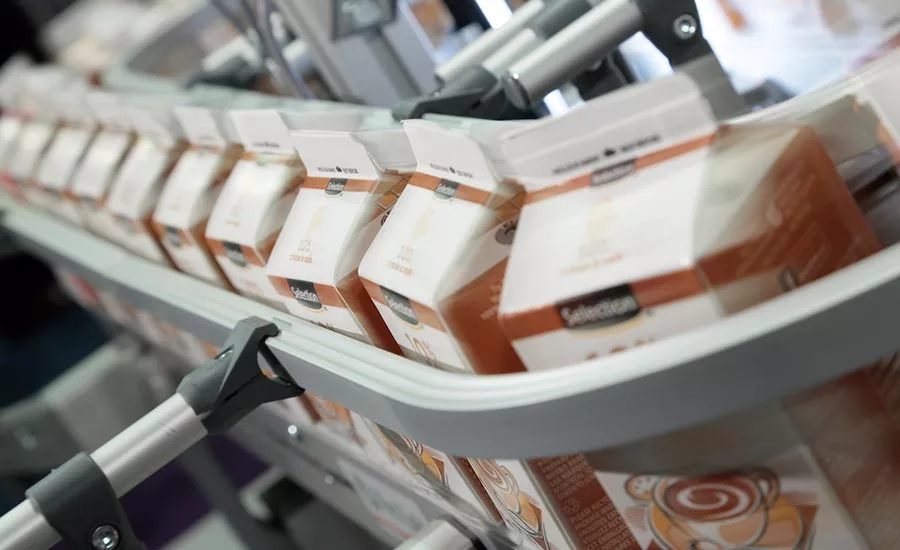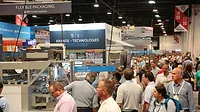Packaging
Packaging technology helps processors meet challenges
Latest solutions can cut costs, reveal opportunities

Today’s food manufacturers face a whole host of new challenges. A shift in consumer needs and demands driven by the increasingly diverse needs of all consumer groups, such as singles, empty nesters and smaller family units, have likely been the greatest disruptors. This resulting divergence in consumer desires necessitates more flexible lines to handle fewer, shorter runs of multiple product types.
But that’s only the beginning. In an effort to ensure a safer food industry, the Food Safety Modernization Act (FSMA) in the United States has brought with it some of the most intensive changes to government oversight in recent memory.
The result in many cases has been a need for new production and packaging equipment. And, for existing machinery, it has become more important than ever that manufacturers are able to keep up with these changing demands with a trained, engaged workforce utilizing the latest production solutions. However, some consumer packaged goods companies (CPGs) may find themselves struggling to address ways to achieve the level of production and packaging efficiency needed to meet these modern-day challenges.
One solution is to embrace some of the major technological advances that are emerging. Robotics, automatic labelers, smart packaging and digital printing are just some of the technologies that can help an operation become more flexible and cost-effective with rapid response times to save on related expenses.
Another way is to take advantage of some of the new informational tools equipment manufacturers have developed to create a clearer picture illustrating how a piece of equipment or new technology can boost efficiency in an operation. These include a comprehensive guide to Total Cost of Ownership (TCO) developed by the OpX Leadership Network, as well as an Overall Equipment Effectiveness (OEE) Benefits Calculator. The OpX Leadership Network is made up of manufacturing, engineering and operations professionals convened by PMMI to improve operational excellence.
Ultimately, whatever technologies or practices a company implements, the goal is to make sure that operations are as fast, reliable and as cost-effective as possible.
Rise of the robots
A variety of breakthrough technologies are now coming into their own and have the potential to bring tremendous new efficiencies to production and packaging lines. The first and perhaps most exciting is robotics. While robot solutions have been available for production line applications for years, a new generation of robots is emerging that is nimbler and collaborative. Some of these robots can operate side-by-side with production personnel. That is, they no longer have to be set apart in a cage or behind guardrails, and increasingly they are able to work right alongside the team with little to no risk of a malfunction possibly injuring workers.
The result is not only a more efficiently designed workplace, but speedier lines and improved safety records. Robots, after all, can be assigned to the more dangerous tasks in an operation.
According to the 2017 Trends in Food Processing Operations Market Research Report by PMMI, The Association for Packaging and Processing Technologies, robotics are now used in 30 percent of processing operations and 94 percent of packaging operations, with both areas predicting increased usage.
Today’s food manufacturers, for example, assign robots to incoming de-palletizing, product pick-and-place, tray loading and in-line blow molding. On packaging lines, robots are being used for sorting, orienting, case packaging, multi-SKU packaging and palletizing, according to the report.
In the next three to five years, industry professionals can expect human-robot collaboration to become increasingly commonplace, according to the report. Perhaps not surprising, the food industry still trails far behind others in the adoption of robots worldwide, leaving the technology a lot of runway for growth. In 2015, food actually came in fifth, behind automotive, electronics, metal and chemical, rubber and plastics, in use of industrial robots, according to the International Federation of Robotics.
Time for an upgrade?
Not ready to make the leap to robotics just yet? Even upgrading to some type of automation can achieve impressive efficiency benefits. Consider the following case study of an automatic splicer as an example.
In a traditional operation, after each label roll, an operator has to stop the machine and replace the roll of labels. But adding an automatic splicer would allow production to continue without the need to stop and to change rolls since they are already loaded. This can save an operation perhaps a minute or more each hour of production. When considered that way, the investment in a more sophisticated labeler will pay for itself in under one year.
Packaging gets smarter
Further advancements like smart packaging also have the potential to boost efficiencies for CPG manufacturers. Smart packaging encompasses a broad range of emerging technologies, but one of the most exciting for a food company is when it comes to tracking and tracing individual SKUs as they make their way through the supply chain. At the same time, antimicrobial packaging is also extending the shelf life of fresh food products, further boosting supply chain efficiencies.
Factoring the Costs
Knowing when to invest in any of these new solutions, and when it makes more sense to upgrade an existing piece of equipment, is the next step. This is where the Total Cost of Ownership (TCO) Playbook and overall Equipment Effectiveness (OEE) Benefits Calculator can help.
The OpX Leadership Network's Total Cost of Ownership: Packaging and Processing Machine Guidelines for CPGs and OEMs is a complete playbook with an accompanying checklist. It breaks down the ongoing costs that factor into the true cost of running machinery, from design and application through maintenance and environmental concerns. It allows CPGs and OEMs to move the discussion beyond the initial purchase price to focus on the true investment and value of the machinery.
A second tool, the OEE Benefits Calculator helps companies find opportunities for increased efficiency on the plant floor. Offered in the form of downloadable worksheets, the calculator can be used to determine direct labor wages and overtime, raw material ingredient and packaging yield, and reductions in unplanned stops.
Both the playbook and the calculator can be downloaded for free at OpXLeadershipNetwork.org.
PACK EXPO Las Vegas to feature more solutions
Given the rapid changes challenging CPGs today, companies need to strategize carefully and creatively while finding solutions. A top destination for discovering efficiency-enhancing technology is PACK EXPO Las Vegas (Las Vegas Convention Center; Sept. 25–27). Co-located with Healthcare Packaging EXPO, the shows will serve as North America’s largest packaging event in 2017, bringing together 30,000 executives, plant managers, engineers, brand managers and packaging designers to see a wide range of packaging solutions from 2,000 suppliers in action. The shows will also provide opportunities for manufacturing professionals to connect with suppliers, talk shop and cross-pollinate ideas between industries to drive innovation.
To learn more about the event, visit packexpolasvegas.com.
Looking for a reprint of this article?
From high-res PDFs to custom plaques, order your copy today!








